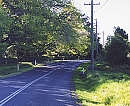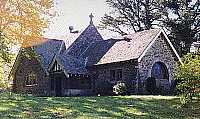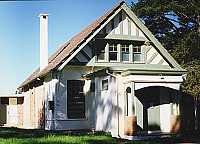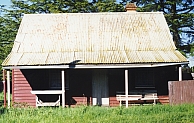Whare Tau, 2 Exeter Road Exeter, c.1903
Offers over $3,300,000
Table of Contents
An historic house in Exeter with a price tag of $3.3 million
An historic house in Exeter with a price tag of $3.3 million is drawing attention from afar.Exeter's gracious house on the hill, Whare Tau, has piqued the interest of a Dubai-based sheik.
 |
| This house at 2 Exeter Road, Exeter, has come back onto the market with a price tag of $3.3 million. |
- The southern highlands estate was marketed for sale two years ago but has just been relisted for $3.3 million.
- "We've had local interest from the highlands and inquiries from Sydney but we've also had an inquiry from a sheik in Dubai," selling agent Sarah Wotton of Highlands Property said.
|  | ||
 |  |
- The Smiths undertook a significant restoration of the National Trust-listed 1903 house and other buildings including an earlier two-bedroom cottage, coach house and stables.
- Whare Tau (a Maori name meaning "first house" or "our home" and pronounced locally as "where to") is one of Exeter's most significant homes.
 |  |
 |  |
- Ms Meek is credited as introducing the Brownie association to Australia and remained their patron until her death in 1992.

 |  |
- There are several living areas including a grand dining room with leadlight doors and a marble fireplace, a kitchen with Miele appliances, four bedrooms and three bathrooms.
- Underfloor heating has been installed under the kauri pine floors and an en suite added to the main and second bedrooms.
Whare Tau
 |  |
 |  |
Garden
The park-like grounds feature a rose walk, specimen trees, cold-weather plantings and a vast vegetable plot. There is a tack room with two stables, four-bay machinery shed and town plus bore water.- The village centre is five minutes' walk away and Bowral is a 25-minute drive. Exeter is home to an eclectic community of artists, writers, publishers and photographers.
 |  |
 |  |
Historically and architecturally significant, Whare Tau sits amidst its magnificent garden estate, a commanding and beautiful example of Federation Queen Anne style.
Situated by parklike grounds and boasting significant outbuildings including a two bedroom brick self contained cottage, a wonderful corn drying shed and original coach house and stables.
- Built by Alf Stephens senior, the property has been lovingly and fastidiously restored, extended and rebuilt by its current owners
- Of double brick and slate roof construction (Welsh Purple) with soaring ceiling height (13ft 4in in part), intricate Wunderlich ceilings and ornate joinery throughout, all which bear witness to the original standard of fine craftsmanship
- Superbly painted decorative ceilings, kauri pine floors, grand marble fireplaces and jaw droppingly beautiful cedar joinery resound throughout the main residence

- Kitchen features a generous arched window overlooking the gardens with in-built Miele BBQ, stainless steel Miele gas cooktop and dishwasher, and island bench
- Capacious living room adjacent to kitchen has timber floors and French doors to the garden and entertaining terrace beyond
- Stately dining room with Cedar windows, leadlight doors, marble fire place and timber floors
- Four bedrooms, two with ensuites, three with beautiful fireplaces
- Four bay machinery shed with power, as well as tack room and two stables, town tank and bore water
- Long views to the North at front and over the gorgeous park-like grounds and only moments to Exeter general store/cafe and village
- 9.5 acres of grounds with beautiful plantings and specimen trees, fabulous vegetable plot and rose walk
 |  |
 |  |
History:
This property was originally part of a grant to the Badgery Family in the 1800s. The Badgery's rewarded workers on their estate by giving them land on which to build a house and run a small farm.- The subject property was later one of three grants to the Shields family; three brothers who competed to build the best house. One house was built on Mount Gibralter, another 300m south-west of this property, and this house, which is the largest of the three.
- The house was purchased by a Miss Irene Hope Meek in 1958 for 11,000 pounds. Miss Meek was the daughter of Sir Joseph Meek, who came to Australia from Northern Ireland after the Irish Rebellion. Sir Joseph Meek established in Australia the firm of Lever and Kitchen, manufacturers of soap and cleaning agents including such well known household products as Sunlight, Lifebuoy, Sand Soap, Pears Soap, Rinso and Lux.
- Miss Meek introduced the Brownies to Australia and was their patron until her death in 1992. The Girl Guide's Association Commemorated Miss Meek's many years of service by holding a ceremony and planting a tree in her memory at Moss Vale. In her capacity as patron, Miss Meek was received on many occasions by the Princess Royal, sister of King George VI, the father of Her Royal Highness Queen Elizabeth II.

- The 35.75 acre (approximately 10ha) property was used for beef cattle farming.
- In 1993, a deceased estate contents auction was held; among 800 lots were sold.
- The property was sold by Ms Thurtell in 1994-95.

Description:
The house is a single story Federation Queen Anne residence of double (face) brick construction, rectangular plan shape, with rear skillion added at an early date. The pitched roof is clad with slate. There are five brick chimneys. Timber gables, including decorative bracketing, provide evidence of fine craftsmanship.- The front verandah is tiled, with marble edging and marble steps. The verandah features cast iron circular columns, a cast iron lace valance and ornamental timber frieze. A small rear verandah is timber floored. Three external panelled doors, including highlights and surrounds, contain leadlight panels incorporating a lotus flower design.
- The exterior of the house is in good condition and retains much of the original fabric and integrity.

The interior of the house contains excellent examples of ornate joinery, often extending to the ceiling height of 15ft. Marble fireplaces, original milk paint colour scheme still intact) continue the prevalence of first class craftsmanship and attention to detail. Oiled timber flooring imported from New Zealand is found throughout the house. The hall is divided by a decorative portal.
- The interior of the house is in good condition, and retains much of the original fabric and integrity.
- A second cottage built in 1916 for workers is still in existence and had been in continuous use until 1992.
- Outbuildings consist of two coach sheds, attached to which is a harnessing room and two tack rooms and two stables. A hayshed and loft are made of adzed slabs.

History of Exeter
 |
| Main Road, Exeter |
In fact Exeter is one of the newer villages in the Southern Highlands, and owes its existence - as do many others - to the coming of the railway in the late 1860s.
 |
| Original store - now homestead, east of station |
ame opened up the area in the 1820s, many settlers prevailed upon the governor of the day for grants in the 'Sutton Forest' area.
Some of these were established landholders closer to Sydney looking for wider spaces to graze their herds.
One such was James Badgery, who had arrived in Sydney in 1799, and for 20 years had successfully farmed in the Bringelly region. His farm here was called 'Exeter', after the town in England near where he grew up. This name was later to be given over half a century later to the new village.
Badgery was granted land between the present Sutton Forest and Exeter villages, and he and his family were later to consolidate holdings of several thousands of acres, centred on the main holding, which was called Vine Lodge.
Today a reminder of this past can be seen on the right hand side of the road as you enter Exeter from Sutton Forest - the horse stud farm of the same name. Descendants of the Badgery family still live in the area.
Other landholders also took up grants in the area, and the actual village today sits mostly on land previously owned by the Badgerys.
 |
| St. Aidans Anglican Church 1896 |
Exeter owes its existence largely to the coming of the railway. Sutton Forest, an established village, was like Berrima bypassed further to the east by the new rail line. The new line in fact cut through the middle of the Badgery properties, and probably had the effect here and elsewhere of breaking up these older landholdings.
There is evidence that some land in the area had been alienated to the railways, and this - in conjunction with the encampment of hundreds of railroad workers from time to time no doubt stimulated ideas of settlement.
However it seems almost 20 years passed before moves were made to establish a town. In 1891 a large section of 'Vine Lodge' was subdivided and sold; the first school was also opened, and a post office. Some houses already existed for staff at the station and new lots were snapped up.
By 1894 there was a new store (thought to be the house "Elouera" on the eastern side of the railway), and a bakery.
The foundation stone of St. Aidans was also laid in 1894, and after a a public subscription the church was opened in 1896. As it
 |
| School of Arts |
By this stage the population was large enough to warrant the establishment of a School of Arts. These places were a cross between meeting hall, library, and educational institution. Exeter's distinctive mock-Tudor building was opened in 1902 on land apparently donated by Dalgety & Co., the pastoral company.
| The old cottage seen today near the railway was originally a blacksmith's shop, and dates from 1890. The two main shops at the crossroads were built c.1900 (the current general store) and c.1920 (for many years the general store, now an antique shop). There does not seem to have been an inn or hotel in Exeter, which makes it different from most settlements in the Highlands. A gold mine operated east of Exeter at the headwaters of Stonequarry Creek in the 1880s, and a mining lease was taken out again for the area in 1904. |


No comments:
Post a Comment